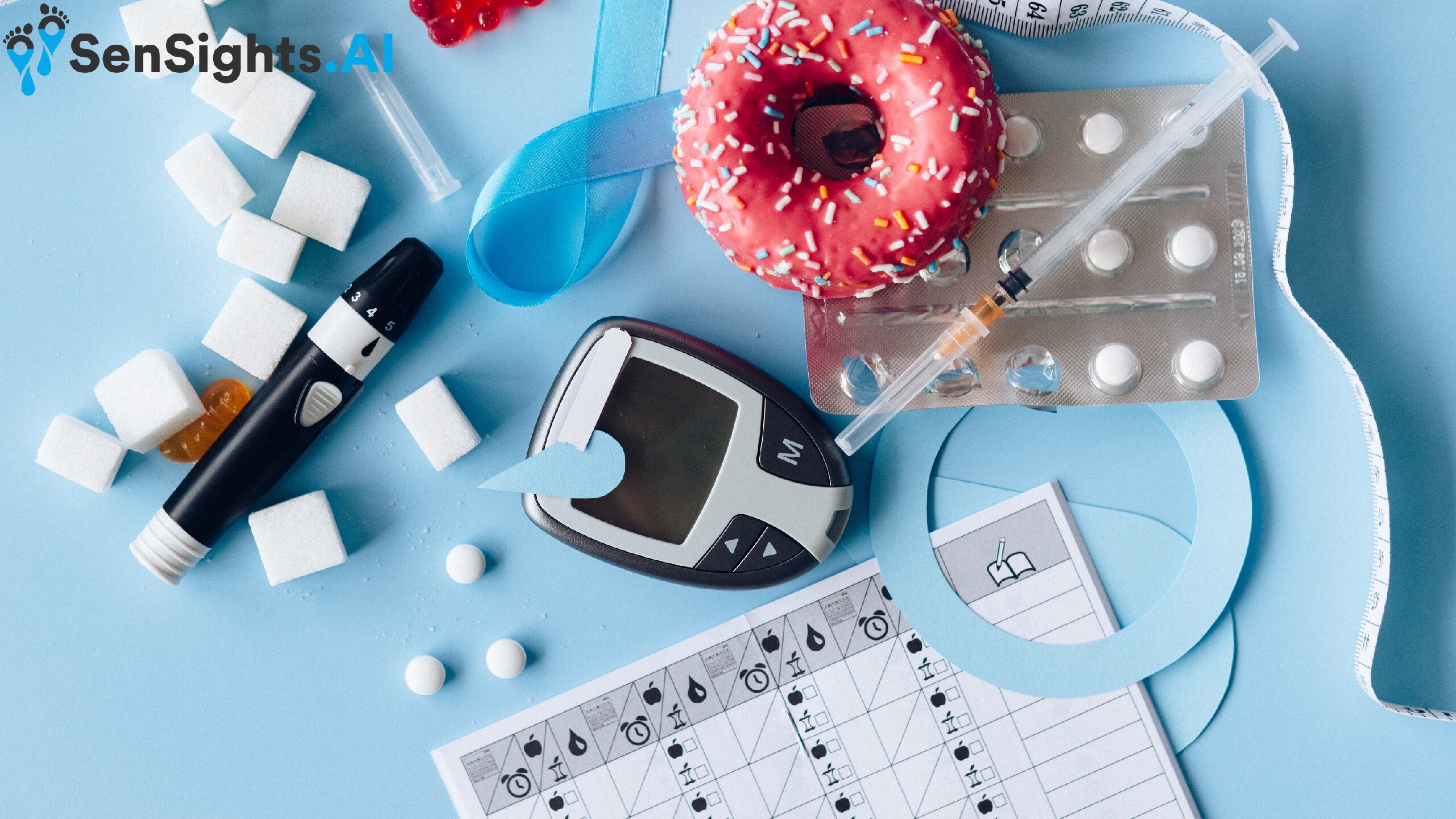Image Credit: Canva
Living with diabetes requires careful monitoring of blood sugar levels to maintain optimal health. Traditionally, individuals with diabetes had to prick their fingers multiple times a day to obtain blood samples for glucose testing. However, advancements in medical technology have introduced a game-changing approach known as prickless glucose monitoring. In this article, we will explore how prickless glucose monitoring works and how it has revolutionized diabetes management.
Understanding Prickless Glucose Monitoring
Prickless glucose monitoring, also referred to as non-invasive glucose monitoring, eliminates the need for finger pricks by utilizing innovative sensor technologies. Instead of drawing blood, these devices measure glucose levels through non-invasive methods such as optical sensors, radiofrequency, or other sensor technologies.
Optical Sensors: Shining Light on Glucose Levels
One common method employed in prickless glucose monitoring is optical sensing. This technology uses light to analyze glucose levels in the bloodstream. Typically, an optical sensor emits light onto the skin, and the intensity of the light reflected back is measured. The sensor then analyzes the light patterns to determine the glucose concentration in the blood.
Optical sensors work based on the principle that glucose molecules in the blood absorb and scatter light differently than other substances. By analyzing the light patterns, the sensor can calculate the glucose levels without the need for invasive procedures.
Radiofrequency and Other Sensor Technologies
In addition to optical sensors, other non-invasive sensor technologies, such as radiofrequency, are also used in prickless glucose monitoring. These technologies rely on electromagnetic signals or electrical impedance to assess glucose levels.
Radiofrequency-based devices emit low-energy radio waves into the body and measure the response. Glucose molecules interact with the radio waves in a unique way, providing valuable information about the glucose concentration in the blood.
Similarly, other sensor technologies may utilize electrical impedance to measure glucose levels. By applying a small electric current to the body, the device can assess the impedance, which is influenced by the glucose concentration. These measurements are then used to calculate the blood glucose levels.
Calibration and Accuracy
For prickless glucose monitoring devices to provide accurate results, calibration is crucial. Calibration involves establishing a correlation between the sensor readings and blood glucose levels. This calibration process is typically performed using a combination of invasive glucose testing and non-invasive measurements. By comparing the sensor readings with the corresponding blood glucose levels, the device can calibrate itself and provide accurate readings in subsequent measurements.
It’s important to note that while prickless glucose monitoring technology has made significant advancements, it may not be as accurate as traditional fingerstick methods. Factors such as skin conditions, temperature, and device limitations can influence the accuracy of the readings. Therefore, regular calibration and occasional cross-checking with traditional methods are recommended to ensure accurate glucose monitoring.
The Benefits of Prickless Glucose Monitoring
Prickless glucose monitoring offers numerous benefits for individuals with diabetes:
Convenience: By eliminating the need for finger pricks, prickless glucose monitoring offers a more convenient and pain-free method of monitoring blood glucose levels.
Reduced Discomfort: Many individuals find finger pricks uncomfortable or unpleasant. Prickless glucose monitoring alleviates this discomfort, making diabetes management a less burdensome experience.
Continuous Monitoring: Some prickless glucose monitoring devices offer continuous glucose monitoring, providing real-time data on glucose levels throughout the day. This continuous monitoring allows for better diabetes management and timely interventions.
Improved Compliance: The ease and convenience of prickless glucose monitoring can lead to improved compliance with glucose monitoring routines, resulting in better overall diabetes management.
Conclusion
Prickless glucose monitoring has revolutionized diabetes management by providing a non-invasive alternative to traditional fingerstick methods. Optical sensors, radiofrequency, and other sensor technologies enable accurate glucose level measurements without the need for blood samples. While calibration and occasional cross-checking with traditional methods are necessary, the benefits of prickless glucose monitoring, such as convenience and reduced discomfort, make it a promising advancement in diabetes care. As technology continues to evolve, we can expect further improvements in prickless glucose monitoring, leading to enhanced quality of life for individuals living with diabetes.
SenSights is a Remote Patient Monitoring and Ageing Solution that aids seniors and healthcare facilities that work with elders who have chronic disorders such as dementia, Alzheimer’s, high blood pressure, falls, COPD, long COVID, and others.
The solution assists at-risk providers, skilled nursing facilities, long-term living communities, home health care providers, and other senior care entities in increasing their capacity by supplementing physical visits with virtual care, preventing wandering and fall episodes, and providing proactive monitoring, risk profiles, and smart alerts via our SenSights Care app.
Clear MD is one of our innovative technologies that helps doctors and patients by summarizing conversations and giving thorough notes and reports. This saves doctors time and effort, allowing them to free up resources and provide a greater level of treatment.
Contact us HERE to learn more about SenSight.Ai and Clear MD!


